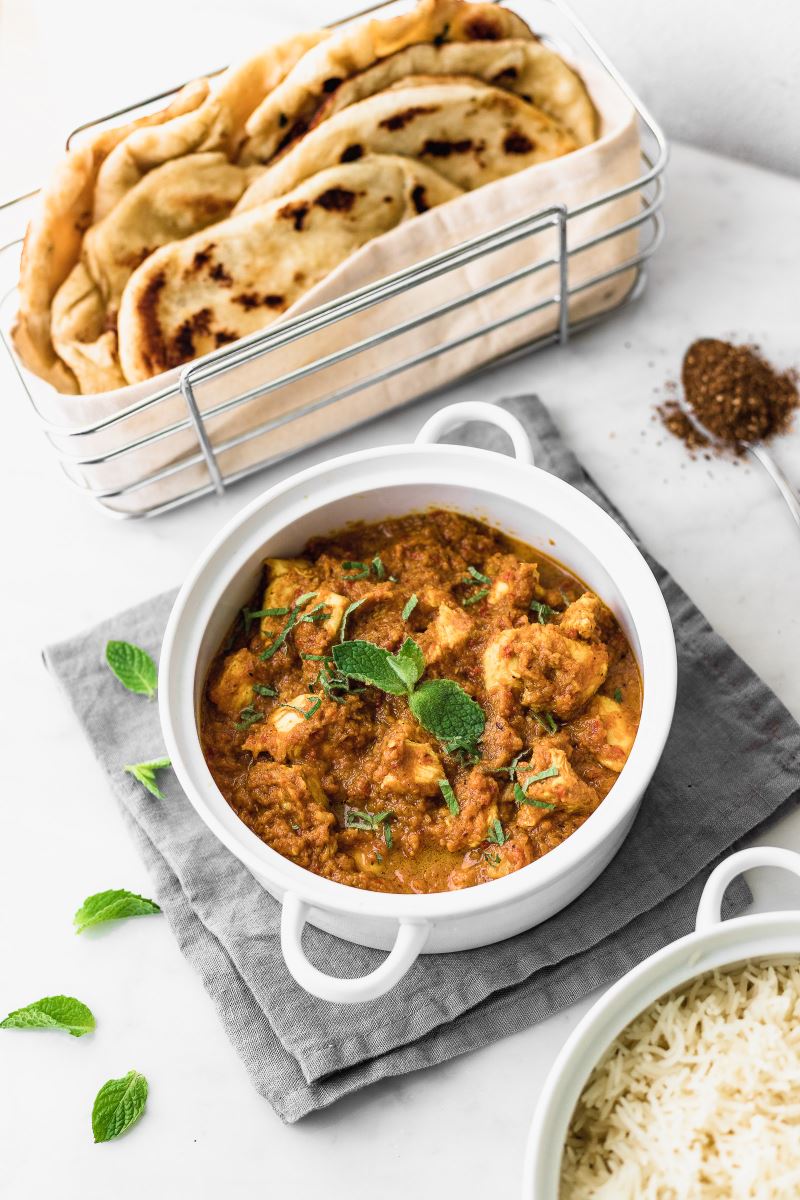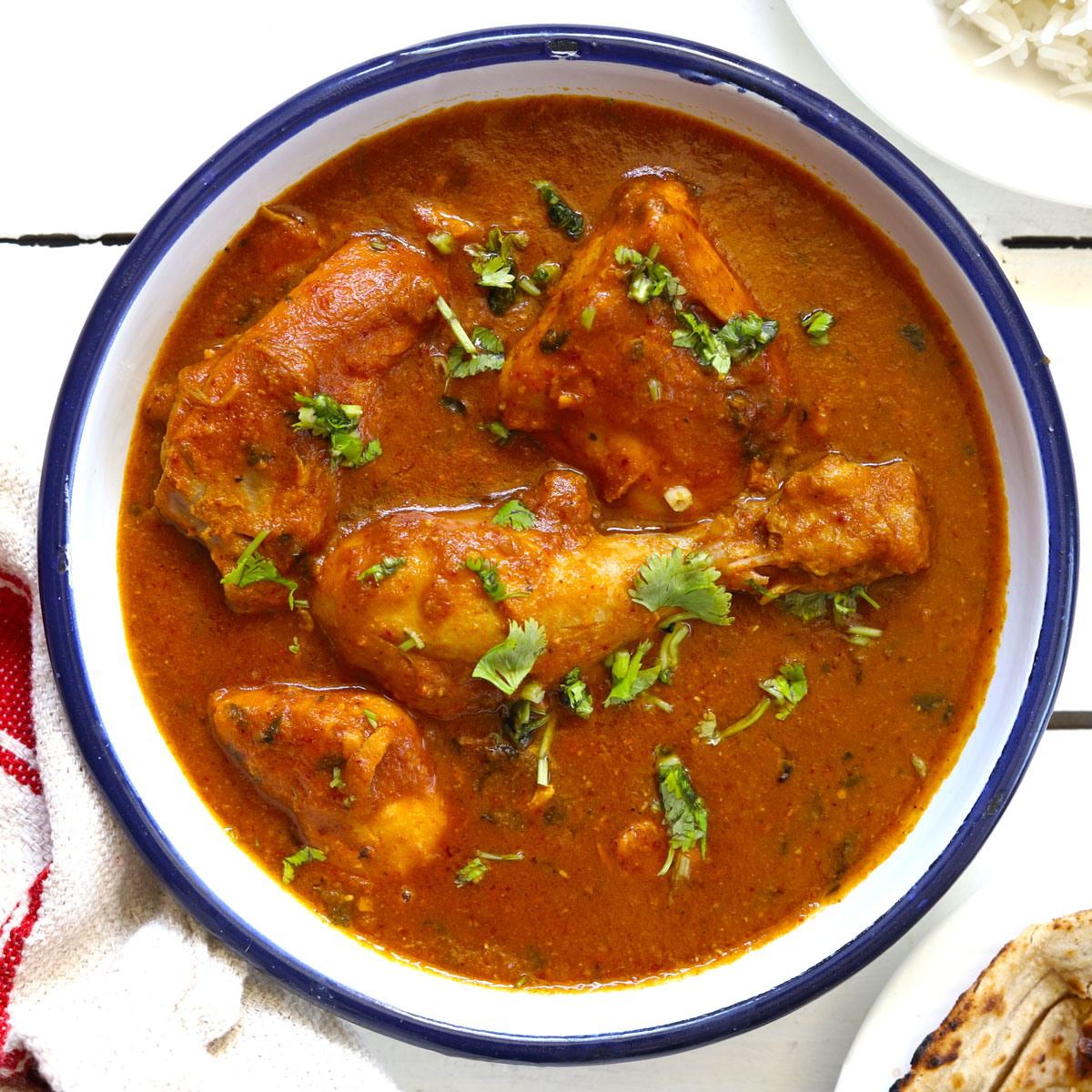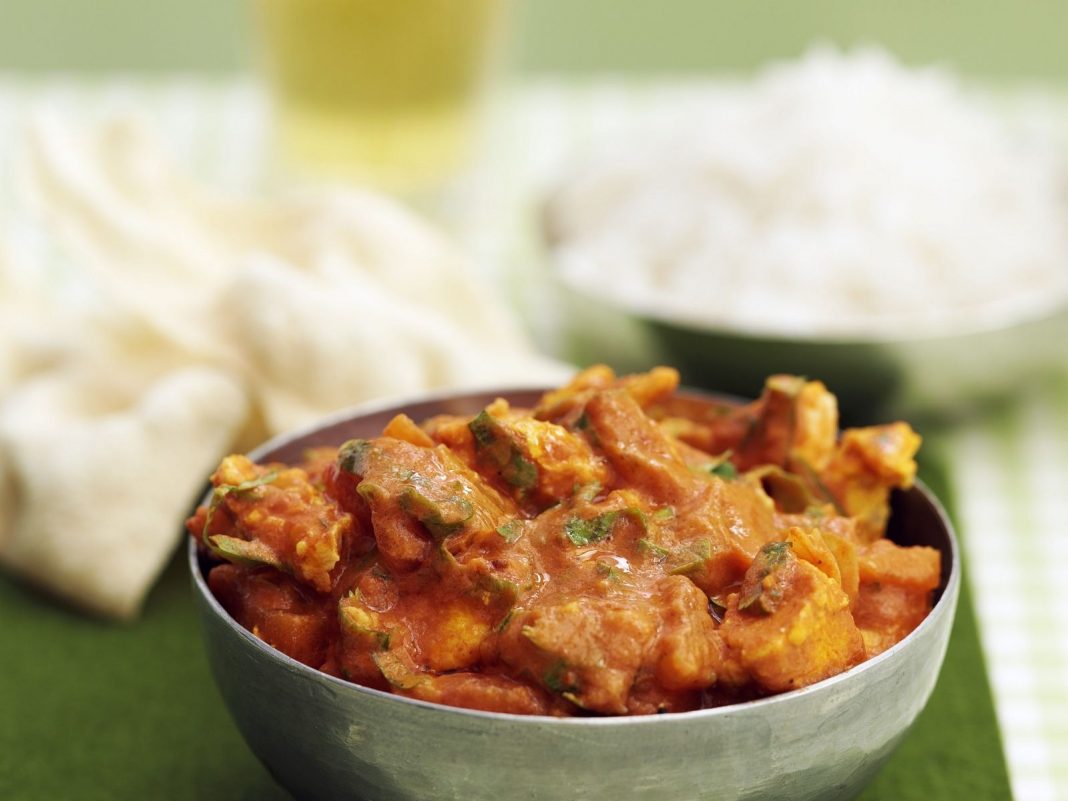Rice and curry dinner comprises the following:
- A large bowl of rice, most often boiled but frequently fried. Sometimes kiribath, rice cooked in coconut milk, is served.
- A vegetable curry, perhaps of green beans, jackfruit, or leeks. A curry of meat, most often chicken or fish but occasionally goat or lamb.
- Dhal, a dish of spiced lentils.
- Papadums, a thin crisp wafer made from legume or rice flour and served as a side dish.
- Sambals, which are fresh chutney side dishes; they may include red onion, chili, grated coconut, lime juice, and are often the hottest part of the meal

Curry is an anglicized form of the Tamil word kaṟi meaning ‘sauce’ or ‘relish for rice’. Archaeological evidence dating to 2600 BCE from Mohenjo-daro suggests the use of mortar and pestle to pound spices including mustard, fennel, cumin, and tamarind pods with which they flavored food. Black pepper is native to the Indian subcontinent and Southeast Asia and has been known to Indian cooking since at least 2000 BCE.
The establishment of the Mughal Empire, in the early 15th century, also influenced some curries, especially in the north. Another influence was the establishment of the Portuguese trading center in Goa in 1510, resulting in the introduction of chili pepper, tomatoes and potatoes to India from the Americas, as a byproduct of the Columbian Exchange.
Curry was introduced to English cuisine starting with Anglo-Indian cooking in the 17th century as spicy sauces were added to plain boiled and cooked meats. Curry was first served in coffee houses in Britain from 1809 and has been increasingly popular in Great Britain, with major jumps in the 1940s and the 1970s. During the 19th century, the curry was also carried to the Caribbean by Indian indentured workers in the British sugar industry. Since the mid-20th century, curries of many national styles have become popular far from their origins, and increasingly become part of international fusion cuisine.

The curry uses chili peppers, cardamom, cumin, coriander and other spices. It has a distinctive taste. The Southern cuisines use ingredients like dried fish which are local to the area. The spicier preparations are believed to be among the world’s hottest in terms of chili content).
While natives are born into this cuisine and develop a healthy tolerance to spicy food, many visitors and tourists to the country often find the spiciness excessive. As a result, many local restaurants in developed and tourist areas offer special low-spice versions of local foods to cater to foreign palates or have an alternative “western” menu for visitors and tourists.
According to en.wikipedia.org















